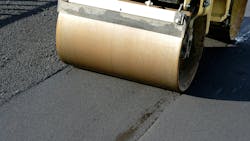Seven miles of porous pavement being installed along Brooklyn roadways
The New York City Department of Environmental Protection (DEP) Commissioner Rohit T. Aggarwala and Department of Design and Construction (DDC) Commissioner Tom Foley joined with Brooklyn officials to announce that work is underway to install seven miles of porous pavement along area roadways to help better manage stormwater and reduce flooding and sewer overflows.
DDC is managing the $32.6 million contract for DEP and construction is anticipated to be completed in the Fall of 2025.
Unlike traditional asphalt roadways, porous pavement allows stormwater to pass through and be absorbed naturally into the ground.
This means less stormwater drains into the sewer system, which can help prevent flooding, sewer backups into homes and businesses, and overflows into waterways.
Porous pavement is installed along the curb line of a street, where the stormwater typically drains towards a catch basin on the corner, and can withstand the weight of motor vehicles, including trucks.
DEP has piloted the use of several different types of porous pavement for a number of years in different boroughs, but this is the first large-scale implementation. Porous pavement cannot be installed on every block due to other conflicts in the streets and sidewalks, such as sewer and water mains, and private infrastructure.
Prior to any construction, soil samples are taken from beneath the roadways that are under consideration to determine if the soil will absorb stormwater.
Once a roadway is approved for construction, the work includes removal of the existing roadway along the curb line to a depth of roughly 24 inches. Drainage cells and stone are added to aid in storage and drainage of the stormwater, as well as to provide structural support for the porous concrete slabs that are laid on top.
According to a New York City government press release, porous pavement will keep 35 million gallons of stormwater out of the Combined Sewer System.


